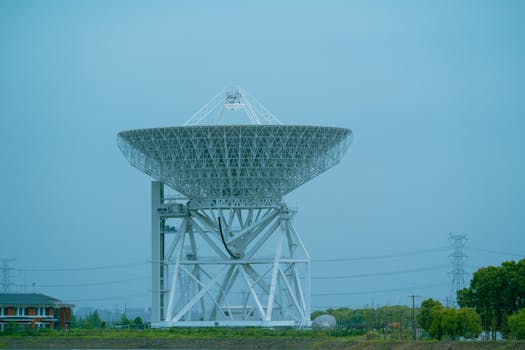Orbiting Innovations: Key Updates in Satellite Telecommunications Technology

Orbiting Innovations: Key Updates in Satellite Telecommunications Technology
Orbiting Innovations: Key Updates in Satellite Telecommunications Technology is transforming the way we communicate and access information. The satellite telecommunications industry has experienced significant growth and innovation in recent years, driven by advancements in technology and increasing demand for global connectivity. In this article, we will explore the latest updates in satellite telecommunications technology and their potential impact on the industry.
The development of new satellite constellations, such as OneWeb and Starlink, is one of the most significant trends in the satellite telecommunications industry. These constellations are designed to provide high-speed, low-latency internet connectivity to remote and underserved communities around the world. With the launch of hundreds of small satellites into low Earth orbit, these constellations are set to revolutionize the way we access information and communicate with each other.
Advances in Satellite Design and Launch Technology
Advances in satellite design and launch technology have been instrumental in driving the growth of the satellite telecommunications industry. The development of smaller, more efficient satellites has reduced the cost of launching and operating satellite constellations. Additionally, the use of reusable launch vehicles, such as SpaceX’s Falcon 9, has significantly reduced the cost of accessing space.
The use of advanced materials and manufacturing techniques has also improved the performance and lifespan of satellites. For example, the use of 3D printing technology has enabled the creation of complex satellite components with increased precision and accuracy. Furthermore, the development of new propulsion systems, such as electric propulsion, has improved the fuel efficiency and maneuverability of satellites.
Signal Processing and Interference Mitigation
Signal processing and interference mitigation are critical components of satellite telecommunications technology. The development of advanced signal processing algorithms and techniques has improved the quality and reliability of satellite communications. For example, the use of adaptive modulation and coding has enabled satellites to optimize their transmission parameters in response to changing interference conditions.
Additionally, the development of advanced interference mitigation techniques, such as beamforming and nulling, has improved the ability of satellites to reject interference and maintain high-quality communications. The use of artificial intelligence and machine learning algorithms has also been applied to signal processing and interference mitigation, enabling satellites to adapt to changing conditions and optimize their performance.
Future Developments and Challenges
Despite the significant advancements in satellite telecommunications technology, there are still several challenges that need to be addressed. One of the major challenges is the issue of space debris, which poses a significant risk to the safety and reliability of satellite operations. The development of sustainable and responsible satellite operations practices, such as de-orbiting and disposal, is critical to mitigating this risk.
Another challenge facing the satellite telecommunications industry is the issue of regulatory frameworks and spectrum allocation. The development of new satellite constellations and the increasing demand for satellite spectrum have highlighted the need for more effective and efficient regulatory frameworks. The use of advanced technologies, such as blockchain and artificial intelligence, may provide new opportunities for improving the management and allocation of satellite spectrum.
In conclusion, the latest updates in satellite telecommunications technology are transforming the way we communicate and access information. With advancements in satellite design, launch technology, and signal processing, the industry is poised for significant growth and innovation. However, there are still several challenges that need to be addressed, including the issue of space debris, regulatory frameworks, and spectrum allocation. As the satellite telecommunications industry continues to evolve, it is likely that we will see new and innovative solutions to these challenges emerge.




